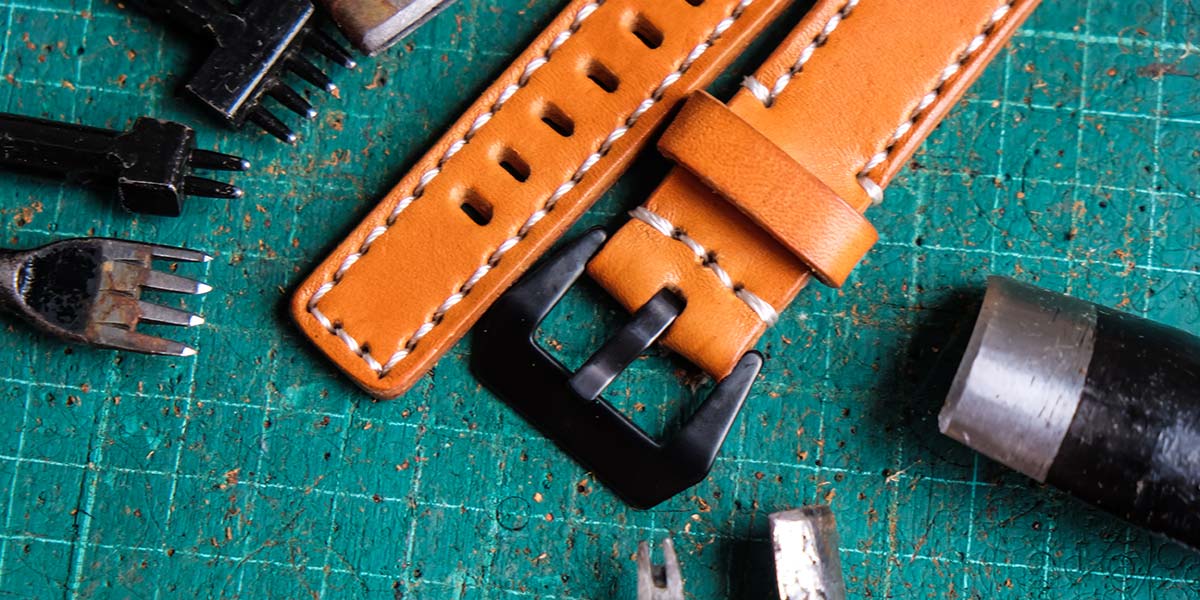For me, the lure of electronics is primarily hands-on experimentation and building. I suppose it’s only natural that my appreciation for hands-on work carries over to my other interests — from clothing to watches.
For example, although I only appreciate a hand-built Lange, I can afford handmade watch straps. I’ve made a few straps by hand, primarily for adding biometric functionality to ‘dumb’ quartz and mechanical watches. The straps contain various sensors from galvanic skin response to pulse rate, as well as hold a watch in place.
In the process of making these straps, I’ve come to appreciate the people that take the time to make, cut, shape, and sew the leather by hand.
At first, it took me several hours to make a single watch strap using only hand tools; from cutting out the strips of leather and making pouches in the leather for ICs, batteries, and leads, to punching holes for the buckle. The straps are functional, but by no means works of art.
With the purchase of a MakerBlock low power solid-state laser engraver ($350, RobotShop), I’ve been able to make straps in half the time, and with virtually no waste. The old-fashioned approach of manually marking the leather at each stitch point and buckle position was error prone and an exercise in frustration.
Now that part of the work is done at the press of a button.
I have watch strap templates in Adobe Illustrator for various width watches and with pockets for various sensors. In about five minutes, I can have everything marked on the leather. Then, it’s simply a matter of cutting and sewing on the dotted lines.
I still spend about 30 minutes per strap cutting out the strips of leather and punching holes for the buckle and stitches. For another $650 or so, I could pick up a CO2 laser cutter and have 90% of the strap completed at the click of a button — more if I left out the stitching and went with gluing only.
I can’t rationalize spending that much on a laser cutter for a few strap prototypes, however. Fact is, I also enjoy the cutting and challenge of getting the sensor pouches just right.
Personally, using the fully automated CO2 cutting approach doesn’t excite me. Efficient? You bet. From a buyer’s perspective, would I opt for the precise laser cut leather over a hand-cut strap? No way. Might as well have been stamped out of plastic.
If I had to put a number on it, I’d say that anything made by machine over 60 percent can’t be called handmade. What’s your cutoff? Do you even care what percentage is automation vs. handmade? Are you drawn to the workbench, or would you prefer to do your work on a laptop?
As an aside, if you’re new to working in a graphics or CAD package, then you might consider starting with Corel Draw, which is relatively affordable and easy to learn.
If money is no object and you need a powerful standard CAD package for your laser engraver, 3D printer, and just about anything else, then look into SolidWorks — especially if you can get an academic license. It’s powerful, but by no means easy to learn. NV

